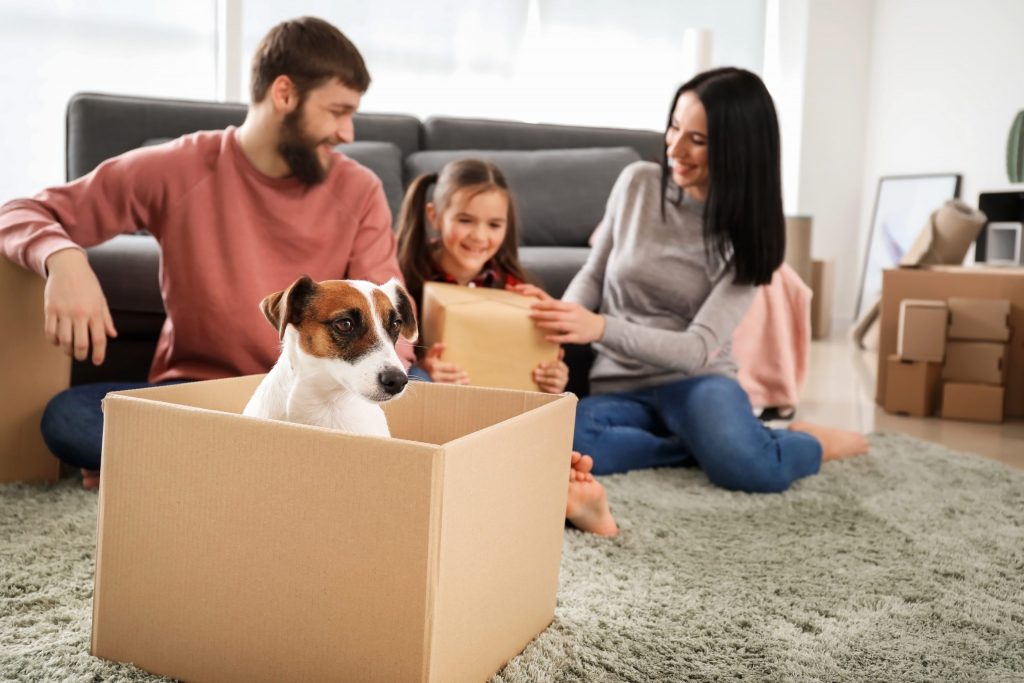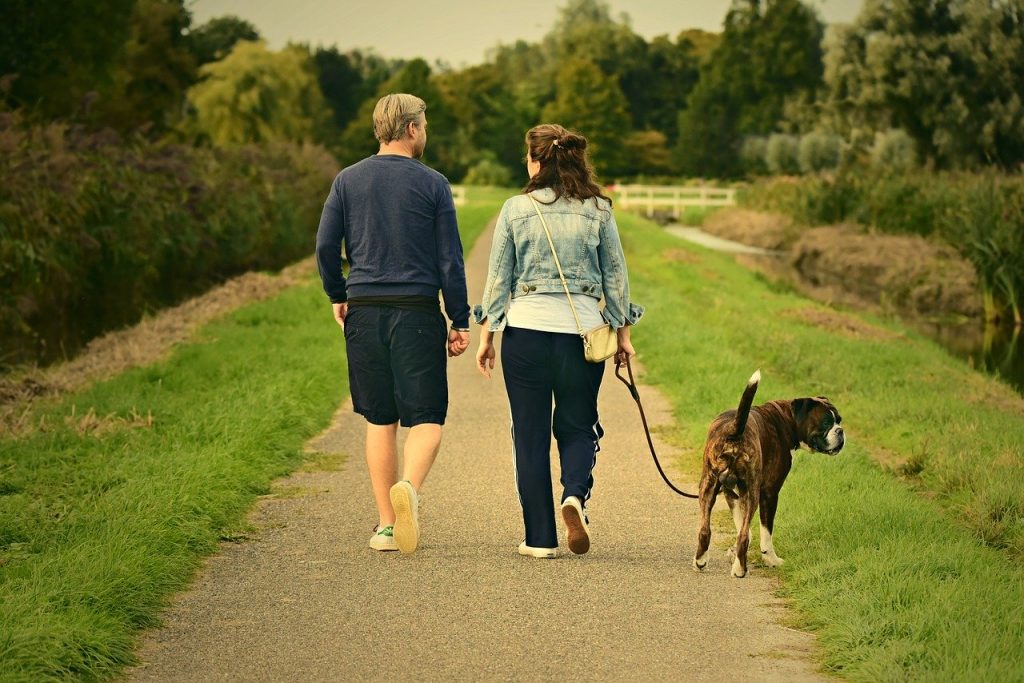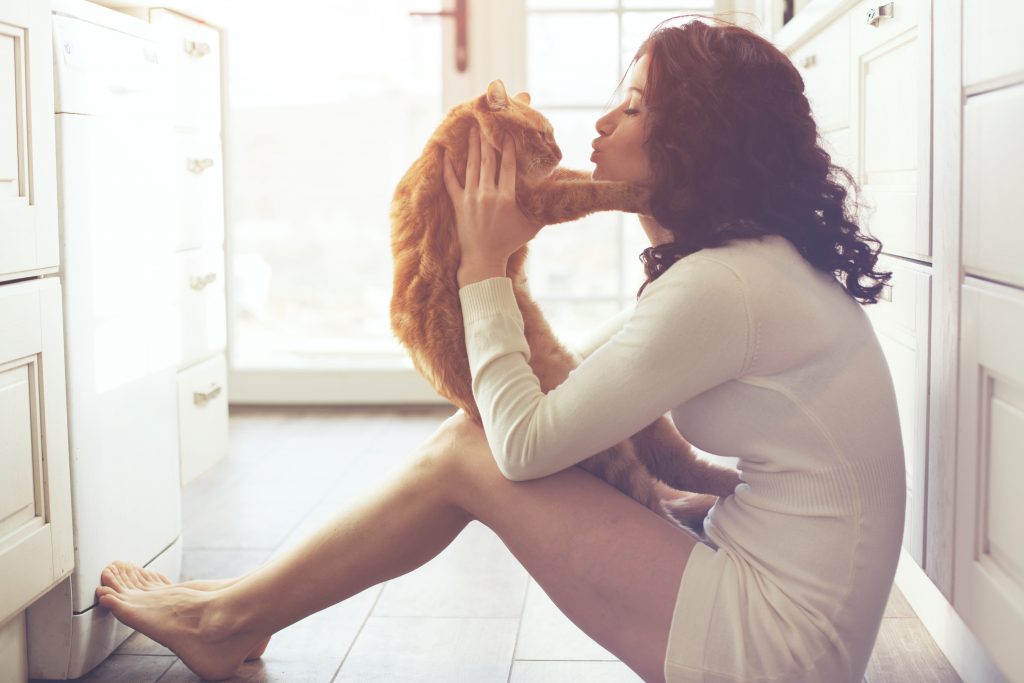Top tips for moving house with pets
April 22, 2020 | Dan Todd
According to a recent poll, moving house is considered to be one of life’s most stressful events – ranking even higher than getting a divorce or having a baby. And it’s easy to see why, what with all the costs, organising, and general upheaval involved.
But it’s not just us humans who can find it a traumatic experience; moving home can also cause a lot of stress for our pets.
Dogs and cats are creatures of habit and extremely territorial, so moving to a completely new environment can, understandably, cause them some anxiety.
But fear not, because we’ve put together a few tips that can make moving house with pets a little smoother, for both you and your furry friends.
Before you move

Visit the vet
If you’re moving house with pets make sure you pay a visit to your current vet before your move date. There are a few reasons why this can be useful.
Firstly, you can make sure that all your pet’s vaccinations are up to date and that you have all their relevant records. This will make things easier if you have to find a new veterinary surgery in the area you’re moving to.
Secondly, it’s a chance to discuss the Move Day with your vet. If your pet gets particularly distressed by travelling, your vet may be able to prescribe some mild sedatives or recommend an anti-anxiety aid that might help.
Finally, if your pet is microchipped, this would be a good opportunity to update the details with your new address – just in case they decide to make a run for it when you get there.
Introduce them to the area
If your new home is not too far away, it’s a good idea to take your dog for a walk around the neighbourhood (and even let them in the house, if possible) to familiarise them with all the new smells.
For cats, bring out the pet carrier early on to give them enough time to get used to it before moving day. You may even want to take some short practice trips in the car, gradually building them up so that your kitty becomes more accustomed to travelling.
Pack a doggy bag
Just like you’d pack yourself an essentials bag as part of your moving day checklist, it’s also a good idea to keep a few necessities to hand when you’re moving house with pets.
Pack items such as water bowls, food, toys, medication, dog leads and, of course, plenty of treats.
During the move

Consider a kennel or cattery
If your pet is particularly anxious you might want to book them into a cattery or kennels on the day of your move, to save them (and you) from the added stress.
Be sure to book them in well in advance of Moving Day, particularly if your move is in the summer when kennels and catteries are at their busiest.
It might also be worth choosing a kennel or cattery that’s nearer to your new home so that it’s easier to pick them up and get them settled once you’re in.
Make time for some exercise
If you decide against a kennel, make sure you factor in plenty of time for some exercise before you set off for your new home.
Even if it’s a slightly longer walk than usual or a bit of time playing fetch in the garden, giving your dog the chance to use up some energy can help reduce anxiety levels.
If the journey to your new home is quite long, don’t forget to plan in lots of stops for short walks and toilet breaks.
Set aside a designated ‘pet space’
When you get to your new home, make some time to get your pet settled first. It’s a good idea to set aside a designated space for your pet – a quiet, secure room that contains some familiar belongings.
This will give your pet time to familiarise themselves with their new environment, and give you a chance to get on with organising the removals company and unpacking.
Give them lots of attention
Moving house is hectic (and moving house with pets even more so!). It can be so easy to get side-tracked with unpacking that you forget about your furry friends.
But remember, this is an unusual experience for them, and they’ll need a little extra TLC to help them get through it.
Stop for regular breaks to give them a bit of attention, whether it’s a quick walk, a play with their favourite toy, a few treats, or just a bit of a belly rub and some soothing words.
After you move

Get them settled
Once you’ve had a chance to unpack you can, slowly but surely, start to introduce your pet to their new home and let them have a little explore.
TIP: Make sure you’ve had a chance to pet-proof the rest of your home first, and make sure there’s nowhere for them to escape.
Be sure to keep giving treats and lots of attention so that your dog or cat feels reassured and safe in their new space. And set out their beds and food bowls early on so they can get used to where to find them.
For dogs, gradually increase the length of your daily walk so that they can slowly adapt to their new neighbourhood. For cats, try to keep them indoors for the first couple of weeks so they don’t feel inclined to go searching for their old patch.
Stay home
If you can, try to stay at home for the first few days after your move – even if it means taking more time off work.
It might take a little while for your pet to feel like their new home is a safe place to be, so having you around will give them a feeling of security and make the process a little easier.
When the time comes, start leaving them for gradually longer periods, perhaps starting with 10 minutes and working up from there.
Stick to their routine
As hard as it can be with so much to do during and after a house move, try sticking to your pet’s regular routines as much as possible.
Keep feeding times, walks, and even your own bedtime the same as normal. The more familiar their routine is, the easier the transition will be.


